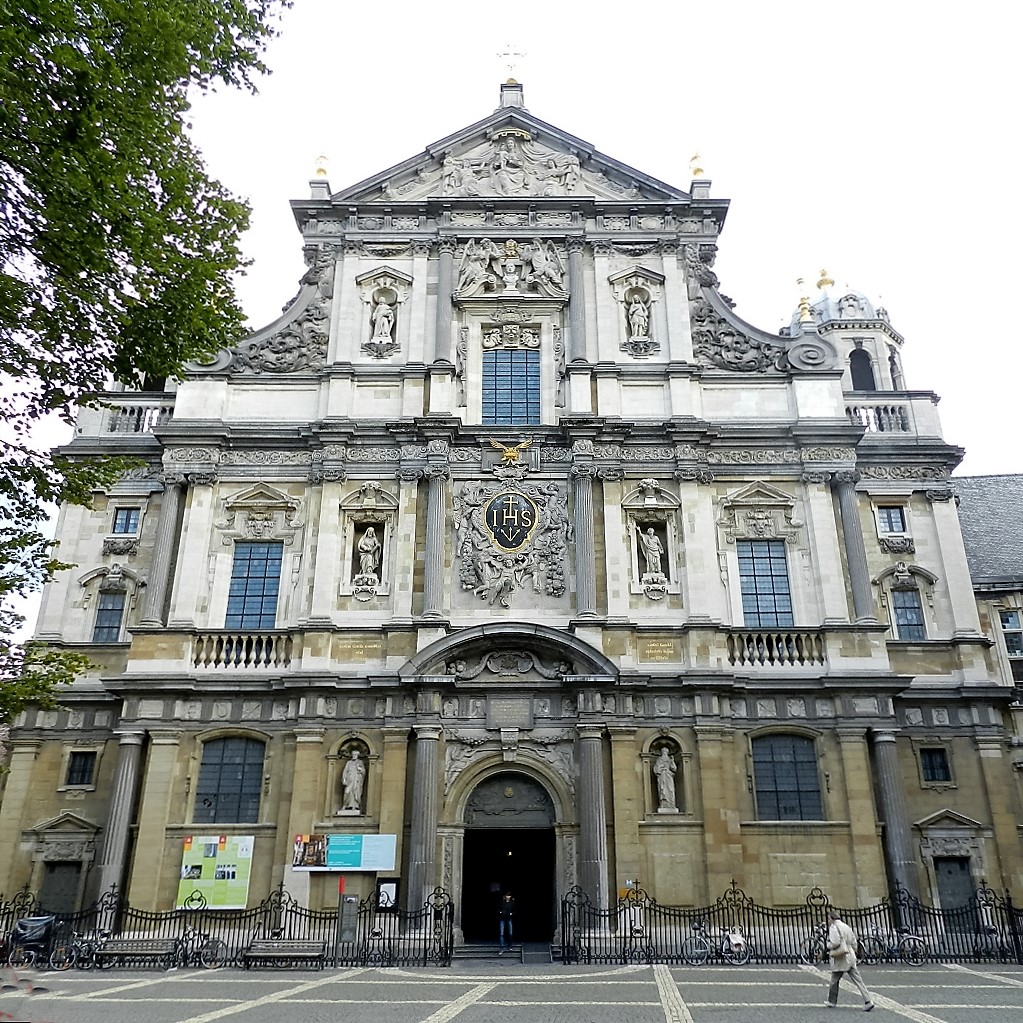The Antwerp jesuit church, a revelation.
The college
Become more humane
In ca. 1540 Ignatius had the ambition to go to the Islamic areas with his first followers to establish a dialogue with the Muslims, but war prevented him from setting sail. That is why they decided to offer their services to the pope. At his demand, they devoted themselves to teaching popular youngsters so as to make them ‘more humane’. ‘Humanities’ education soon became one of the most important ministries of the order. In the Middle Ages education was mostly confined to clergy and nobility in conventComplex of buildings in which members of a religious order live together. They follow the rule of their founder. The oldest monastic orders are the Carthusians, Dominicans, Franciscans, and Augustinians [and their female counterparts]. Note: Benedictines, Premonstratensians, and Cistercians [and their female counterparts] live in abbeys; Jesuits in houses. schools and a few universities. In the 16th century the Jesuit colleges met with the wider need for intellectual formation, so-called ‘humanism’ (not to be confused with present-day liberal ‘humanism’). Also in Antwerp, the Jesuit college was the first institution for secondary education, and this Christian humanism, albeit with different insights and accents, has remained their educational ideal.
Because of this educational project the Jesuits started education free of charge! The college fee was not a problem for the less prosperous ones. To realise this each college needed a sufficient number of foundations. Education was only for boys though. In the social-economic situation of those days only children of the privileged classes could afford going to school; not without reason the Latin ‘schola’ means as much as ‘leisure time’. Most young boys were nearly self-evidently trained as apprentices for their father’s profession. The Jesuits did not see it as their task to cause any structural change to this. So, the majority of their about 500 pupils were privileged in more than one sense.
A lot of attention was devoted to classical culture and Latin as a vernacular. Another striking characteristic of their educational project is the usage of visual language. The spirit of their founder – reflected in the Spiritual Exercises – has made them exceptionally skilled at this. Their creativity in this field is unrivalled. Have you had a good look at the emblemata? They are maxims illustrated with an allegoric image, engraved by the better artists. Their jubilee book ‘Afbeeldinghe van d’eerste eeuwe der Sociëteyt Iesu’ [Image of the first century of the Society of Jesus] (1640) is full of them. For instance: ‘hoe hoger de baren, hoe beter het varen’ [the higher the waves, the better the sailing], which means as much as: the master shows his skills in difficult circumstances. This visual culture is also shown in the plays performed by pupils. Almost every year there was at least one theatre performance at the occasion of the solemn prize-giving ceremony. In 1685 the magistrate of the town did not appeal to their talent in vain, when he asked them to contribute to the jubilee procession at the centennial of the liberation of the town.
In 1593 a boarding institution was opened at the other side of Spuistraat (at the level of the western side of Campus Carolus of Lessius High School Antwerp). Because of the increasing number of pupils, the municipality placed the old Hof Van Liere in Prinsstraat at their disposal in 1607. (Now this is the city Campus ‘Hof van Liere’ of Antwerp University in Prinsstraat). To this exquisite patrician dwelling, which used to be the English merchants’ house for many years, the nice renaissance wing by fatherPriest who is a member of a religious order. Frederik de Tassis was added to house other departments.
At the demand of the Antwerp bishopPriest in charge of a diocese. See also ‘archbishop’. the Jesuits started courses in moral theology, exegesis and apologetics for seminarians. Philosophy was taught to the scholastics, members of their order who were still under instruction, among whom was (the later SaintThis is a title that the Church bestows on a deceased person who has lived a particularly righteous and faithful life. In the Roman Catholic and Orthodox Church, saints may be venerated (not worshipped). Several saints are also martyrs.) Jan Berchmans. In the year 1617 a course of higher mathematics was started. Soon it acquired international appreciation thanks to the scientific work of François d’Aguilon and professor Grégoire de Saint-Vincent, in the fields of astronomy and optics. Father Jan-Karel della Faille, who was portrayed by Van Dyck, was a student there. Four years later this very promising discipline was transferred to Louvain.
Initially there was one rector for both Jesuit communities, the famous historian Carolus Scribani. In the meantime, Huis van Aken temporarily housed the Dutch speaking noviciate of the order. At the division of the Belgian Jesuit province, according to the languages spoken, Huis van Aken became the siege of the provincialate of the Flemish-Belgian province in 1612. Four years later this residence became autonomous: it became a professed house, in which evangelical poverty was observed more strictly. This implied they could not have any regular(Adj.) This is said of a priest who is a member of a religious order and therefore submits to the rule of this order and owes obedience to the superior of his (monastic) community. income. The first prepositus (rector) of this community, which counted some thirty fathers and brothers, was Jacobus Tirinus. The great building plans this young father had in mind, were elaborated by father François d’Aguilon and after his untimely death in 1617, by lay brotherA male religious who is not a priest. Pieter Huyssens.

